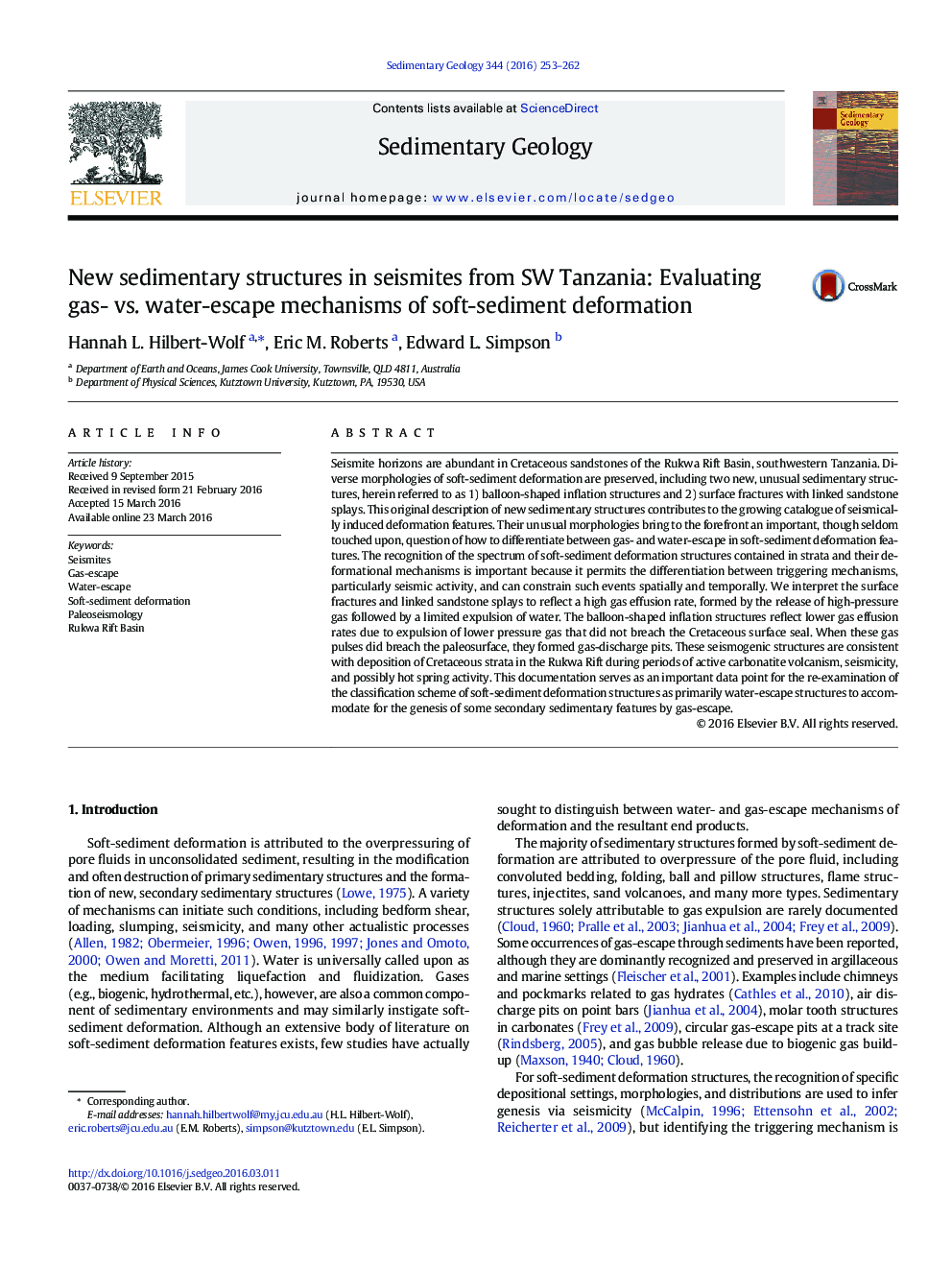| کد مقاله | کد نشریه | سال انتشار | مقاله انگلیسی | نسخه تمام متن |
|---|---|---|---|---|
| 4688961 | 1636019 | 2016 | 10 صفحه PDF | دانلود رایگان |
• We describe new sedimentary structures: inflation structures and surface fractures.
• These soft-sediment deformation structures were generated via gas-escape.
• Surface fractures reflect a high gas effusion rate.
• Balloon-shaped inflation structures reflect a low gas effusion rate.
• Gas-escape must be considered in formation of soft-sediment deformation structures.
Seismite horizons are abundant in Cretaceous sandstones of the Rukwa Rift Basin, southwestern Tanzania. Diverse morphologies of soft-sediment deformation are preserved, including two new, unusual sedimentary structures, herein referred to as 1) balloon-shaped inflation structures and 2) surface fractures with linked sandstone splays. This original description of new sedimentary structures contributes to the growing catalogue of seismically induced deformation features. Their unusual morphologies bring to the forefront an important, though seldom touched upon, question of how to differentiate between gas- and water-escape in soft-sediment deformation features. The recognition of the spectrum of soft-sediment deformation structures contained in strata and their deformational mechanisms is important because it permits the differentiation between triggering mechanisms, particularly seismic activity, and can constrain such events spatially and temporally. We interpret the surface fractures and linked sandstone splays to reflect a high gas effusion rate, formed by the release of high-pressure gas followed by a limited expulsion of water. The balloon-shaped inflation structures reflect lower gas effusion rates due to expulsion of lower pressure gas that did not breach the Cretaceous surface seal. When these gas pulses did breach the paleosurface, they formed gas-discharge pits. These seismogenic structures are consistent with deposition of Cretaceous strata in the Rukwa Rift during periods of active carbonatite volcanism, seismicity, and possibly hot spring activity. This documentation serves as an important data point for the re-examination of the classification scheme of soft-sediment deformation structures as primarily water-escape structures to accommodate for the genesis of some secondary sedimentary features by gas-escape.
Figure optionsDownload high-quality image (178 K)Download as PowerPoint slide
Journal: Sedimentary Geology - Volume 344, October 2016, Pages 253–262
